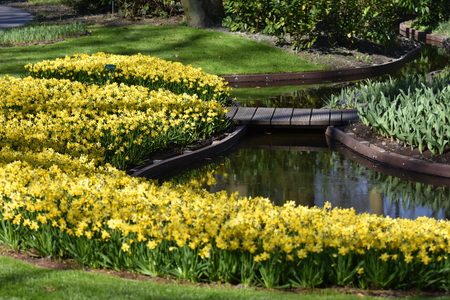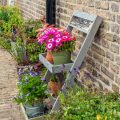Introduction to British Garden Traditions
Britain’s gardening culture is celebrated worldwide for its diversity, creativity, and deep-rooted history. For centuries, gardens have been an essential part of British life, shaping landscapes from grand country estates to humble village plots. Two styles stand out as particularly influential: the classic formal garden and the informal cottage garden. Both approaches reflect not only aesthetic preferences but also cultural values and historical trends. Whether marked by symmetry and order or by relaxed abundance and natural charm, these garden traditions continue to inspire gardeners across the UK and beyond. This article explores how classic British formal gardens compare with informal cottage gardens, tracing their origins, key features, and lasting appeal in Britain’s rich horticultural heritage.
Key Features of Classic Formal Gardens
Classic British formal gardens are renowned for their geometric layouts, precise symmetry, and carefully selected plantings. These gardens, often seen at grand stately homes such as Hampton Court Palace or Blenheim Palace, reflect centuries of tradition and design influenced by both Renaissance and Baroque styles. The overall effect is one of order, elegance, and grandeur.
Geometry and Symmetry
The hallmark of a formal garden lies in its strict geometry. Paths and planting beds are arranged in straight lines or perfect shapes, such as circles or rectangles, often centred around a focal point like a fountain or statue. Hedges are clipped to exact heights and shapes, creating visual harmony throughout the space. This sense of balance is designed to impress and provide a sense of calmness.
Plant Choices
Plant selection in formal gardens is carefully controlled to maintain structure year-round. Evergreen shrubs such as box (Buxus) and yew (Taxus) are favourites for hedging and topiary. Seasonal flowers are chosen for their uniform colour and height, ensuring a tidy appearance. Lawns are meticulously maintained to create smooth green carpets between beds and borders.
Typical Elements Found in Classic Formal Gardens
| Feature | Description |
|---|---|
| Parterres | Intricate patterns formed by low hedges, often filled with coloured gravel or flowers |
| Avenues | Straight pathways lined with trees or shrubs, leading the eye towards a focal point |
| Topiary | Sculpted shrubs shaped into geometric forms or animals |
| Fountains & Statues | Centrally placed water features or sculptures add grandeur and serve as centrepieces |
Atmosphere and Experience
The overall atmosphere of a classic formal garden is one of discipline and refinement. Every element works together to create an ordered retreat from the natural chaos outside the garden walls. Visitors often feel as though they have stepped into a living work of art, where every view is thoughtfully composed.
![]()
3. The Spirit of the Cottage Garden
Cottage gardens are celebrated for their informal, relaxed charm—a striking contrast to the symmetry and order of formal gardens. Rooted in rural British tradition, these gardens evoke a sense of warmth and hospitality. Rather than rigid lines or manicured lawns, cottage gardens thrive on wild profusion and a blend of colours and textures.
Wild Profusion and Natural Growth
The hallmark of a cottage garden is its abundance. Plants grow freely, often spilling over paths and mingling together in delightful disarray. There is little concern for strict spacing or formal patterns; instead, flowers, herbs, and vegetables share beds, creating an ever-changing tapestry throughout the seasons.
Embracing Native and Traditional Plants
Cottage gardens favour native British species such as foxgloves, hollyhocks, delphiniums, and roses. These plants not only flourish in local conditions but also attract pollinators like bees and butterflies, adding life to the garden. The inclusion of edible plants—like lavender, chives, or gooseberries—reflects the practical origins of cottage gardening, where beauty and usefulness go hand in hand.
A Welcoming Atmosphere
At its heart, the cottage garden is designed to be inviting. Winding paths encourage exploration, while rustic fences or arches add character without formality. Benches or small seating areas are often tucked into quiet corners, offering a peaceful retreat for reflection or conversation with friends. This open and friendly spirit makes the cottage garden a beloved feature in British homes, embodying both tradition and personal expression.
4. Design Principles and Plant Selection
When comparing classic British formal gardens with informal cottage gardens, the way plants are chosen and arranged plays a crucial role in shaping their distinctive styles. Both garden types are beloved in the UK, but they achieve their beauty through very different principles.
Formal Gardens: Structure and Symmetry
Classic British formal gardens, inspired by Renaissance and Georgian influences, rely on strong geometry, symmetry, and order. Plants are selected for their ability to be shaped, clipped, and maintained in precise forms. Hedges of yew or box, topiary trees, and parterres are signature features. Flower beds are often laid out in neat patterns, with colour schemes kept restrained for an elegant effect.
Key Plant Choices in Formal Gardens
| Plant Type | Role | Example Species |
|---|---|---|
| Hedges & Topiary | Create structure and boundaries | Buxus sempervirens (Box), Taxus baccata (Yew) |
| Evergreen Shrubs | Add year-round formality | Ilex aquifolium (Holly), Laurus nobilis (Bay) |
| Flowering Borders | Add seasonal colour in controlled blocks | Tulipa spp. (Tulips), Lavandula angustifolia (Lavender) |
Cottage Gardens: Informal Abundance and Charm
The informal cottage garden is more relaxed and spontaneous. Planting appears unplanned but is cleverly layered for continuous colour from spring to autumn. Perennials, annuals, herbs, and even vegetables mingle together in dense borders. The focus is on scent, wildlife value, and nostalgic charm rather than perfect order.
Key Plant Choices in Cottage Gardens
| Plant Type | Role | Example Species |
|---|---|---|
| Perennials & Annuals | Create colourful, changing displays | Geranium pratense (Meadow Cranesbill), Digitalis purpurea (Foxglove) |
| Climbers & Ramblers | Soften structures and fences | Rosa spp. (Roses), Clematis montana (Clematis) |
| Herbs & Edibles | Add scent and practical use | Lavandula spp. (Lavender), Thymus vulgaris (Thyme) |
Aesthetic Outcomes: Contrast at a Glance
| Feature | Formal Garden Approach | Cottage Garden Approach |
|---|---|---|
| Layout Style | Symmetrical, geometric paths & beds | Curved paths, irregular beds |
| Main Focus | Structure & orderliness | Biodiversity & visual abundance |
| Colour Palette | Mainly restrained & harmonious tones | Diverse, bold mixtures of hues |
| Maintenance Level | High – regular clipping & shaping needed | Moderate – deadheading and occasional thinning |
This comparison highlights how each British gardening style selects plants not just for individual beauty but to achieve a particular mood—whether it’s stately formality or abundant, welcoming informality.
5. Emotional Impact and Cultural Significance
Classic British formal gardens and informal cottage gardens each evoke unique emotions and associations that are deeply woven into British cultural identity. Formal gardens, with their symmetry, clipped hedges, and ordered layouts, often create a sense of calm, control, and grandeur. Walking through these elegant spaces can make one feel as though they have stepped into a living piece of history, echoing the sophistication and authority of stately homes and royal palaces. This style is closely tied to Britain’s aristocratic heritage, symbolising tradition, stability, and refinement.
In contrast, the informal cottage garden exudes warmth, comfort, and nostalgia. Its relaxed planting schemes burst with colour and fragrance, inviting visitors to slow down and enjoy the simple pleasures of nature. These gardens are reminiscent of rural villages and English countryside life, reflecting ideals of home, self-sufficiency, and an unpretentious connection to the land. Many people associate cottage gardens with childhood memories, literary works like those of Beatrix Potter or Jane Austen, and the cherished idea of “home sweet home.”
Together, these two styles represent different facets of British identity: the formal garden’s order speaks to a love for tradition and structure, while the cottage garden’s informality celebrates creativity and a deep-rooted affection for nature. Both continue to influence how Britons relate to their outdoor spaces today, shaping not only landscapes but also national sentiment.
6. Modern Adaptations and Contemporary Relevance
Today, both classic British formal gardens and informal cottage gardens continue to inspire gardeners across the UK, but their roles and appearances have evolved to meet modern needs and lifestyles. Many homeowners blend elements from each style, creating practical yet beautiful spaces that suit smaller plots or busy schedules. Formal gardens are often adapted for urban settings, with neatly clipped box hedges and structured planting beds adding elegance to townhouse courtyards or public squares. These features offer year-round structure and are easier to maintain on a modest scale.
In contrast, cottage garden influences are widely seen in suburban and rural homes, as well as community gardens. Their relaxed planting schemes, which combine perennials, herbs, and flowering shrubs, encourage biodiversity and support pollinators—an increasingly important consideration today. The emphasis is on sustainability, with many gardeners favouring native species and eco-friendly practices.
Public spaces across Britain also reflect this blend of traditions. Formal layouts are used for ceremonial gardens or historic sites, while informal borders soften pathways in parks and nature reserves. Both styles promote community wellbeing by providing accessible green spaces that invite people to relax, gather, or simply enjoy the beauty of nature.
Ultimately, modern British gardening celebrates versatility. By adapting classic formal designs and the charm of cottage gardens to contemporary life, these enduring styles remain relevant—bringing order, joy, and a touch of heritage to homes and public spaces throughout the UK.


